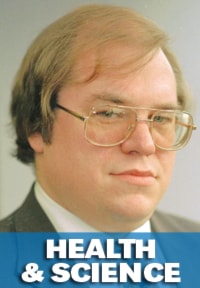The feel-good brain chemical dopamine may soon have a new medical use in cancer therapy, pumping up the ability of chemotherapy to move deep inside tumours.
A recent study by researchers at Ohio State University found that dopamine may be the mechanism for a phenomenon oncology teams have noted for years — patients with positive things in their lives and a positive outlook often respond better to treatment. Although the signalling substance performs other functions, it’s best known as the “reward chemical” that surges in the brain whenever we experience something pleasurable, from eating a favourite food to kissing a sweetheart. The drug also plays a role in addiction.
But a team led by Dr. Sujit Basu of OSU’s James Cancer Hospital has found that dopamine has some powerful effects on blood vessels in and around tumours.
Since he started studying dopamine at the National Cancer Institute of India a quarter-century ago, Basu has learned that some receptors for the chemical slow tumour growth by suppressing blood-vessel growth, while other brain transmitters like epinephrine improve blood-vessel and tumour growth. He first reported signs that dopamine could influence the impact of drugs on breast- and colon-cancer cells in the lab. In their latest findings, the researchers demonstrated that injecting dopamine into tumours greatly improves the size and structure of blood vessels inside the tumours. Normally, blood vessels inside the abnormal masses are jumbled, unstable and leaky, making it much harder to deliver cancer-fighting drugs where they’re most effective.
Basu and his colleagues injected dopamine into lab animals with colon and prostate tumours and found surprising results.
“It worked like a wonder,” Basu said in an interview. “It not only normalized the blood vessels, it increased the blood flow. We were able to double the amount of anti-cancer drugs inside the tumour.”
The scientists point to the experience of Sandra Stockhorst, a colon-cancer patient who saw tumours reappear despite surgery and one round of chemotherapy early in her four-year battle with the disease. Her doctors faced a challenge in getting drugs into the hard-to-reach tumours.
Stockhorst said in a videotaped interview provided by OSU that she believes her love of her horses helped her beat back cancer. “They were a huge motivation,” she said. “I would think ‘I’m going to walk to the barn today. I’m going to groom a horse today.’ And I found the strength to do it.”
Not everyone produces dopamine at the same pace or even responds the same way to pleasurable events. But Basu said it would be simple and cheap to supplement the chemical for cancer patients.
“A dose costs 33 cents. When you compare it to most other drugs being used in cancer therapy, it’s really, really inexpensive,’’ he said. “And we know it’s safe. Dopamine has been used in the clinic for many years now — in the brain and more recently to treat a number of gynecological conditions. The side effects are well-known and manageable.”
So while human tests of the effectiveness of cancer treatment with dopamine may be required, little or no new safety testing should be needed. The researchers expect trials to prove effectiveness against tumours in humans to start soon. In the animal tests, Basu said dopamine allowed the cancer drugs to kill tumour cells without doing any damage to nearby healthy cells.
“We’ve shown this can work in principle,’’ Basu said. “Now we just need to get this into the clinics to treat cancer patients.”
Lee Bowman is a health and science writer from Scripps Howard New Service. Contact Bowman at Bowmanl@shns.com
